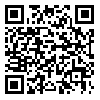Volume 4, Issue 3 (2024)
jpt 2024, 4(3): 253-264 |
Back to browse issues page
Download citation:
BibTeX | RIS | EndNote | Medlars | ProCite | Reference Manager | RefWorks
Send citation to:



BibTeX | RIS | EndNote | Medlars | ProCite | Reference Manager | RefWorks
Send citation to:
Seifollahifard E. Embodied Cognition in Avicenna's Viewpoint. jpt 2024; 4 (3) :253-264
URL: http://jpt.modares.ac.ir/article-34-76328-en.html
URL: http://jpt.modares.ac.ir/article-34-76328-en.html
Department of Islamic Philosophy and Theology, Faculty of Humanities, Tarbiat Modares University, Tehran, Iran
Abstract: (2224 Views)
From the perspective Islamic of Philosophers, particularly the Peripatetics, cognition is primarily an act of the soul rather than the body. While conventional philosophical approaches often view cognition as entirely separate from the body, this article employs an analytical-descriptive methodology to explore how the body might influence cognition within Avicenna's philosophical and medical frameworks. Despite Avicenna's dualistic view that soul and body are distinct entities and his identification of the soul as the primary agent of cognition, his understanding of the soul-body relationship allows for a form of embodied cognition. In this view, variation or changes in the body at any level of perception can affect the soul, thereby altering the cognition of a single known object. However, Avicenna's concept of embodied cognition is fundamentally different from physicalism, as the soul retains its role as the essential principle in the emergence of cognition.
Article Type: Original Research |
Subject:
Epistemology (Islamic)
Received: 2024/07/30 | Accepted: 2024/10/20 | Published: 2024/10/31
Received: 2024/07/30 | Accepted: 2024/10/20 | Published: 2024/10/31
References
1. Carman T (2014). Merleau-ponty. 2nd edition. Alia M, translator. Tehran: QOQNOOS. [Persian] [Link]
2. Ibn Sina (1913). RISALAH AL-NAFS. Amid M, editor. Tehran: Series of National Works Publications. [Arabic] [Link]
3. Ibn Sina (1933). MI'RAJ NAMEH. Mayel Heravi N, editor. Mashhad: Foundation for Research of Astan Quds Razavi. [Arabic] [Link]
4. Ibn Sina (1944). AL-MABDA' WA AL-MA'AD. 1st edition. Tehran: Publications of the Institute of Islamic Studies, McGill University in Cooperation with the University of Tehran. [Arabic] [Link]
5. Ibn Sina (1945). AL-NAJAT MEN AL-GHARAQ FI BAHR AL-DALALAT. Daneshpazhouh MT, editor. Tehran: Tehran University Press and Publications. [Arabic] [Link]
6. Ibn Sina (1952). AL-MUBAHATHAT. Bidar M, editor. Qom: Bidar Publications. [Arabic] [Link]
7. Ibn Sina (1972). AL-ISHARAT WA AL-TANBIHAT (Volume 1). 8th edition. Malekshahi H, translator. Tehran: SOROUSH. [Arabic] [Link]
8. Ibn Sina (1975a). AL-TABI'IYYAT FI KITAB AL-SHIFA (Volume 2). Madkoor I, editor. Egypt: AL-HAY'A AL-MISRIYA AL-AMMA LIL-KITAB. [Arabic] [Link]
9. Ibn Sina (1975b). AL-NAFS FI KITAB AL-SHIFA. 5th edition. Hassanzadeh Amoli H, editor. Qom: BUSTAN-E KETAB. [Arabic] [Link]
10. Ibn Sina (1980). UYUN AL-HIKMAH. Beirut: DAR AL-QALAM. [Arabic] [Link]
11. Ibn Sina (1984). AL-TA'LIQAT. Badawi A, editor. Qom: MAKTAB AL-I'LAM AL-ISLAMI. [Arabic] [Link]
12. Ibn Sina (1985). AL-MANTEGh FI KITAB AL-SHIFA (volume 1). Qom: School of Ayatollah al-Marashi al-Najafi (RA). [Arabic] [Link]
13. Ibn Sina (1989). AL-QANUN FI AL-TIBB (Volume 1). Sharafkandi A, translator. Tehran: SOROUSH. [Persian] [Link]
14. Ibn Sina (2009). RISALAH ADHWIYA. In: Taheri M, editor. MAJMU'AH RASA'IL Ibn Sina. Qom: AYAT-E ESHRAQ. [Arabic] [Link]
15. Karimian Saqelani A, Hesabi Rad H (2016). The role of steamy soul in the relationship between the psyche and body in Avicenna's philosophical psychology. Theological-Doctrinal Research. 6(23):77-94. [Persian] [Link]
16. Mostafavi H (2008). SHARH AL-ISHARAT WA AL-TANBIHAT (NAMAT III). Tehran: Imam Sadiq University. [Persian] [Link]
17. Mousavi Bojnordi M (2004). The great Islamic encyclopedia (volume 2). Tehran:The center of the great Islamic encyclopedia .[persian] [Link]
18. Parsaee J, Ghaffari H (2018). The role of the body in appearance of sensory perception in Ibn Sina and Mulla Sadra' s perspectives. The Epistemological Research. 6(14):61-86. [Persian] [Link]
19. Rahimpour F (2011). Ibn Sina's philosophical and medical ideas on relation between faculty of rationality (intellection) and brain. Religious Thought. (37):85-102. [Persian] [Link]
20. Rashidian A (2004). Husserl in the context of his works. Tehran: Ney Publishing. [Persian] [Link]
21. Tusi NAD (1983). SHARH AL-ISHARAT WA AL-TANBIHAT (Volume 2). 2nd edition. Qom: Book Publishing Office. [Persian] [Link]
22. Vafaian MH (2020). Embodied cognition: Explaining the status and the effect of body on the process of cognition within Mulla Sadra's perspective. Religious Thought. 20(76):119-138. [Persian] [Link]
| Rights and permissions | |
 |
This work is licensed under a Creative Commons Attribution-NonCommercial 4.0 International License. |






